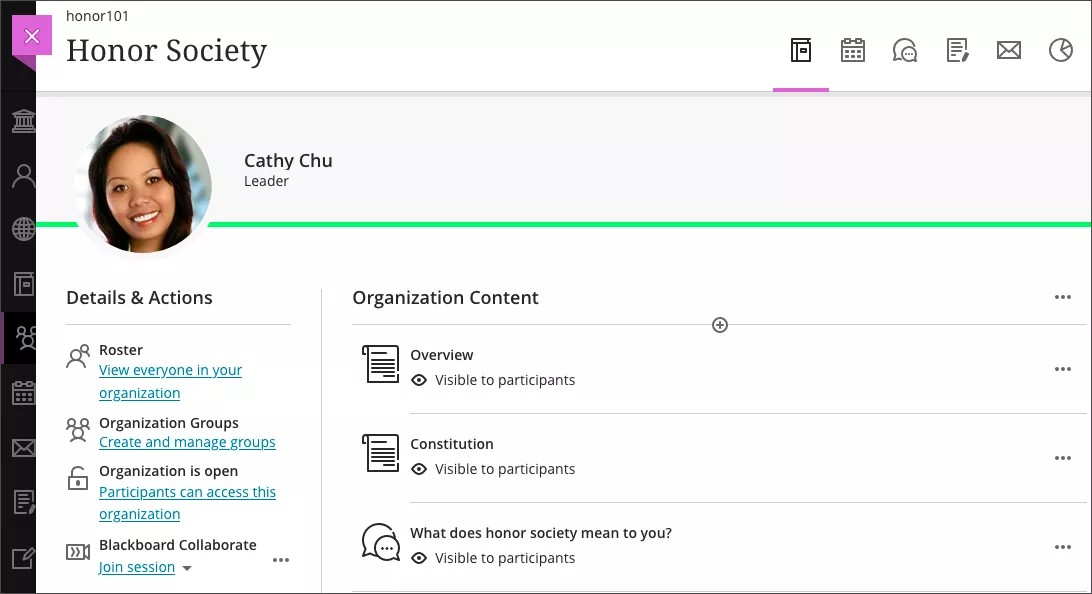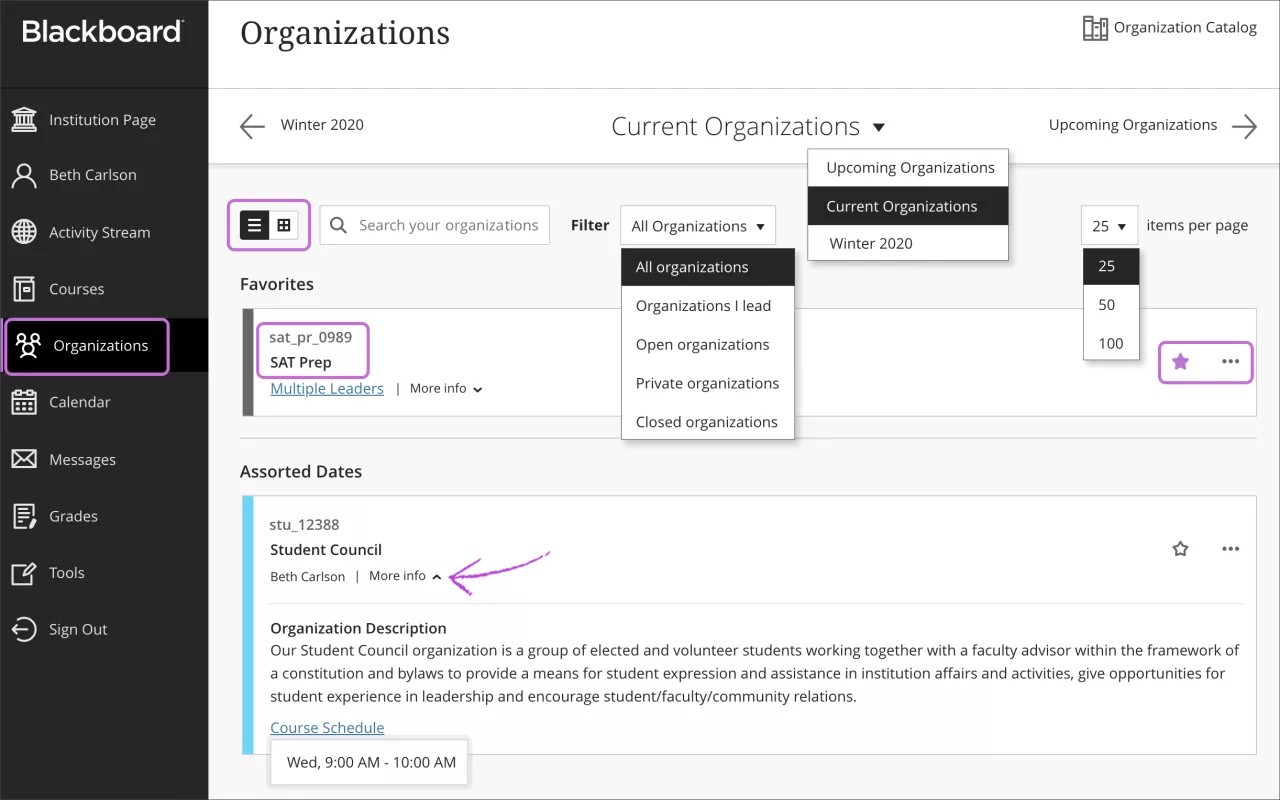Organizations
Organizations behave like courses and contain tools that enable group members to communicate efficiently. You can post information, have discussions, and share documents.
Organizations can help broaden the scope of an institution's reach across subjects, time periods, and more. Groups that might use organizations include academic departments, study groups, and extra-curricular activities.
Global Organizations page
From the list where your name appears, you can view a list of your organizations. You can return to previous organizations to review content, reuse material, and prepare your future organizations.
On the Organizations page, you can access all of your organizations, no matter which organization view they're delivered in. The Ultra Organization View and the Original Organization View appear seamlessly in the list. The Original Organization View now appears with a new design, and any previous themes or color selections are overridden.
Each organization card lists the organization ID, organization title, and leader. If your organization has multiple leaders, select Multiple Leaders for a list. Select More info to see the description and schedule, if added.
Filter or search your list. Use the Filter menu to modify your view of the page. Your filtered list stays as you access organizations. If you navigate to another page, all organizations show again. Use the search function to find organizations on the current page.
Browse by term. Move to past, current, and upcoming organizations. If you teach a lot of organizations, you can choose how many appear on each page. At the bottom of the list, you'll find a page selector to navigate through long lists.
View your favorites quickly. If you access an organization frequently, you can select the star icon to add it to your favorites so it appears at the top of the list. No more scrolling! You can select the star icon again to remove an organization from your favorites.
You can't reorder organizations in the list. Organizations are listed in alphabetical order and grouped by term with the newest organizations first. Your favorites appear at the top of the page.
Manage your organizations. You can set your organizations to these states:
- Open: You can open an organization when you're ready for participants to view the content.
- Private: You can make an organization private while you add or experiment with content, and then open it to participants when you're ready. Participants see private organizations in their organization lists, but they can't access them.
You can't make an organization private during an active term. If a user needs access to a private organization, contact your administrator about an organization's settings.
- Hide: You can choose to hide an organization from the list to organize your view. Activity for hidden organizations no longer appears in the global pages about all your organizations, such as Grades. Only leaders have the option to hide organizations. To show a hidden organization, filter the list by Hidden from me > open a organization's menu > select Show organization.
- Complete: You can choose to set your organization to Complete when the organization has ended, but you can no longer make changes to it. Participants can access the content, but they can't participate in the organization any longer. For example, they can't reply to discussions or submit assignments. You can return the organization to Open or Private as you want. However, if an organization has an end date, and the end date passes, then participants can't access the organization any longer. So, if you complete a organization and open it again after the end date, participants can't access it. Complete applies to the Ultra Organization View only.
Change your view. You can view the Organizations page as a list or a grid. In grid view, you can customize the image on your organization cards.


